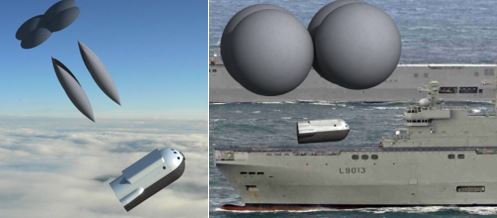As there is no possible landing on Venus, all modules must float in the atmosphere in the image of a airship. Hydrogen lift recovery is therefore the the basic technique on which the project is based. After the atmospheric reentry, the module deploys a parachute to extract a balloon which is then inflated by hydrogen until stabilized. The ballon, Like all external surfaces of the module, must be covered with a thin PTFE layer to protect it from sulphuric acid clouds. In the sequel hydrogen recovery will be used to refer to the reserves of liquid hydrogen and then gas to inflate the balloons. The hydrogen lift term will be reserved for the modules that will remain in the atmosphere and will therefore exclusively use hydrogen as it is gas.

Hydrogen allows the recovered and reused of the expensive hydrolox stage. This technique can be part of the technological reused of Venusian programme, as it would allow the recovery of hydrogen stage without having to turn the engine back on. In addition, it allows to use hydrogen gas that pressurizes the tank and is already part of the empty mass penalizing for the Delta-V. Finally, hydrogen can be produced on site to inflate an extra balloon or manage losses.
Altitude 54 km above surface level, a temperature of 36.6°C and a 0.638 times the earth’s pressure. In approximation, we use the law of perfect gases and Venus’ atmosphere is considered to be composed of only CO2 to calculate volume masses, and we get:
| 54 km Venus | Earth (Standard conditions for temperature and pressure) | |
| Atmospheric mass atmosphere (kg/m3) | 1,006 | 1,225 |
| Dihydrogen volumic mass (kg/m3) | 0,050 | 0,090 |
| Volume mass difference (kg/m3) | 0,956 | 1,135 |
| “Portance” per kg of H2 (kg/kg) | 19,12 | 13,610 |
Contrary to Earth, to Venus, no team can come and retrieve the elements that have landed at different locations on the planet to bring them back to the firing range. However by carrying enough hydrogen from the reserve, it is possible to control and select the right wind to return to base camp (at image of a hot air balloon). In addition, an atmospheric propulsion system electric motor base speeds up the return and refines the approaches.